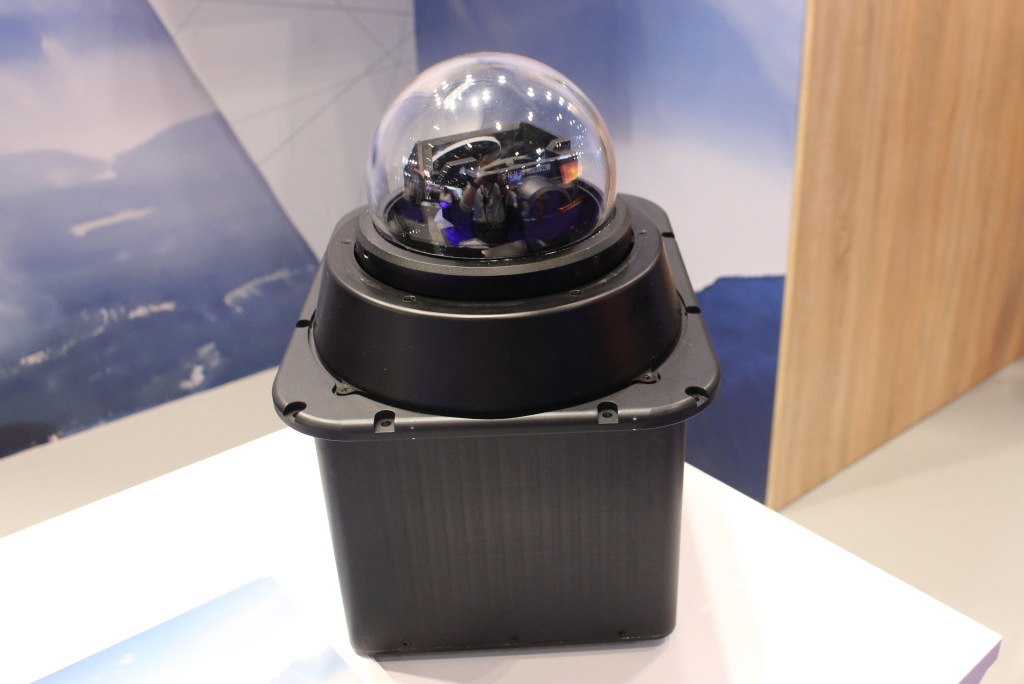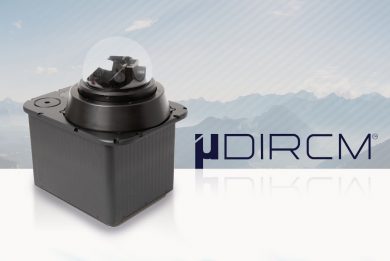
DSEI 2025 – BIRD Aerosystems announces the µDIRCM
BIRD Aerosystems, a leading global provider of innovative airborne solutions, specialising in aerial surveillance and missile protection systems, has developed the µDIRCM (micro-directed infrared counter measure) to be deployed on the Apache AH-64A
On 8 September, BIRD announced that it had been awarded a contract to develop, install, and test its Airborne Missile Protection System (AMPS) on the Israeli Air Force’s Apache AH-64A, which can be read about here. BIRD’s patented µDIRCM is the world’s “lightest, smallest and most advanced multi-functional solution” and was developed in collaboration with the Directorate of Defence Research & Development (DDR&D) of the Israeli Ministry of Defence. The system mass is only 7 kg and measures 160 x 200 x 230 mm (L/W/D).
It has been confirmed that the Israeli Apache AH-64A will be fitted with BIRD Aerosystems’ entire AMPS, which includes the µDIRCM and the MicroEye, BIRD Aerosystems’ missile warning system (MWS), though the µDIRCM can be integrated with any MWS. According to Matan Perry, Chief Marketing Officer and VP of Sales at BIRD Aerosystems, each MicroEye has a mass of 1.3 kg; in the AMPS, there are five, which are fitted onto strategic parts of the aircraft, ensuring full 360-degree coverage. Once fitted, the AMPS has a combined total mass of just under 14kg.
At DSEI 2025, Matan Perry revealed that they had been able to achieve the mass and size reduction for the µDIRCM by eliminating the need for a radar in the micro-variant. Traditionally, radars in DIRCM are used to detect the movement speed, cross-section, and direction of a potential missile simultaneously. Whilst variants like BIRD Aerosystems’ SPREOS utilise a semi-active dual-band radar and directional IR countermeasure, the µDIRCM is instead equipped with two IR trackers. The system ensures a near-zero false alarm rate by comparing the heat source in two different infrared bands. The µDIRCM can determine whether the signal matches the unique infrared signature of a missile trail, which significantly reduces false alarms.
The MicroEye MWS scans the surrounding environment for any possible threat. Should a threat be detected, a warning is then relayed to the µDIRCM. The µDIRCM then uses the two IR trackers to determine if the potential danger is really a missile. Following this, the µDIRCM shall engage the high-power solid-state laser emitters to deliver high-precision jamming.
Perry stated that BIRD Aerosystems identified the need for smaller platforms to be protected, which was previously challenging due to the SWaP limitations. With this in mind, BIRD Aerosystems developed a solution that provides effective protection against Man-Portable Air Defence Systems (MANPADS) and other threats for small airborne platforms in a cost-effective manner. Perry confirmed that the µDIRCM can be fitted to a variety of platforms ranging from a UAV to a B777.
Perry confirmed that the µDIRCM will become operational in mid-2026 and that interested clients include NATO members, countries from the European Union and Southeast Asian countries.
BIRD Aerosystems’ development of the µDIRCM and AMPS promises to be an extremely effective solution with both civilian and military applications. It is evident that the system already has a considerable amount of interest. As the launch date approaches, it is undoubtedly the case that we shall see this implemented more widely on smaller airborne platforms in need of effective protection against MANPADS and other airborne threats.
Photo by A. Haywood



